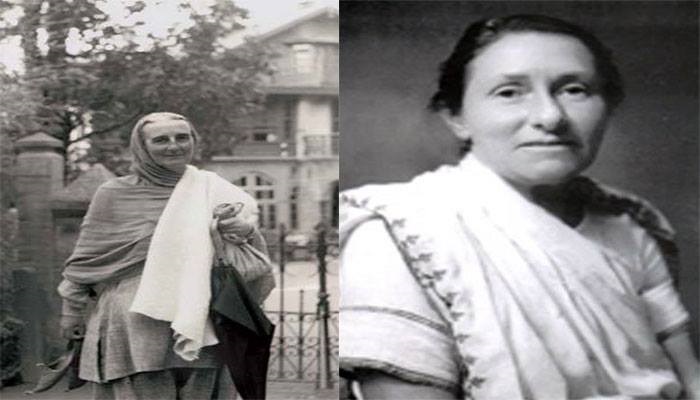
When it comes to India’s Independence, there was no stone left unturned. Every person was invoked to fight for Ghandi. This was especially true for Ghandhi’s adopted, English daughters: Meera Ben and Sarla Ben.
Gandhi was a cleaver politician and recognized the strength of womanhood in his fight for Indian Independence. In his speech he states that “To call woman the weaker sex is a libel; it is man’s injustice to women. If by strength is meant moral power then woman is immeasurably man’s superior. Has she not greater intuition, is she not more self sacrificing, has she not greater power of endurance, has she not greater courage? Without her man would not be. If non-violence is the law of our being, the future is woman. I have nursed this thought now for years.”
Meera Ben
Meera Ben whose real name was Madeleine Slade her interest in Ghandi was picqued by Romain Rolland’s biography of Gandhi. Having made her decision, she went about training herself for all the demands of an ascetic’s life in India including vegetarianism, spinning and teetotalism. She arrived in Ahmedabad on 7 November 1925 where she was received by Mahadev Desai, Vallabhbhai Patel and Swami Anand. This was the beginning of her stay in India that lasted almost thirty-four years. Mirabehn’s stay in India coincided with the zenith Gandhian phase of the freedom struggle. To plead India’s case she also went abroad meeting, among others, David Lloyd George, General Smuts and Winston Churchill, and visited the United States, where she met Mrs. Roosevelt at the White House. Mirabehn also took an active interest in the establishment of the Sevagram Ashram and worked among the people of Orissa to resist any potential Japanese invasion non-violently in the beginning of 1942. She was arrested and detained with Gandhi in the Aga Khan Palace, Pune, from August 1942 to May 1944 where she saw Mahadev Desai and Kasturba Gandhi pass away. She was also a witness to the Simla Conference and the Cabinet Mission, the Interim Government and the Constituent Assembly, the Partition of India and the assassination of Mahatma Gandhi.
She returned to England in 1959. In 1960, she relocated to Austria and spent twenty-two years in Vienna, where she died in 1982.
She was awarded India’s second highest civilian honour, the Padma Vibhushan in 1981.
Sarala Behn
Ghandi’s second (adopted) daughter, Sarala Behn was born Catherine Mary Heilman in the Shepherd’s Bush region of west London in 1901. She worked for a while as a clerk, leaving her family and home and during the 1920s came in contact with Indian students in London who introduced her to Gandhi and the freedom struggle in India. Inspired, she left England for India in January 1932, never to return again.
She worked for a while at a school in Udaipur before moving on to meet Gandhi with whom she remained for eight years at his ashram at Sevagram in Wardha. Here she was deeply involved in Gandhi’s idea of “nai talim” or basic education and worked to empower women and protect the environment at Sevagram. It was Gandhi who named her Sarla Behn.
Sarla Ben was a resilient English Gandhian social activist who went from village to village helping the families of political prisoners and whose work in the Kumaon region of Uttrakhand, India helped create awareness about the environmental destruction in the Himalayan forests of the state She played a key role in the evolution of the Chipko Movement and influenced a number of Gandhian environmentalists in India including Chandi Prasad Bhatt, Bimala behn and Sunderlal Bahuguna.

Post Your Comments